

Blackjack Strategy
The game of blackjack is considered to be one of the oldest and most popular casino card games in the world. The origins of the game are complex, with variations of the modern game found in many European cultures, including Spain, Italy, France and England. Today the game of blackjack is more popular than ever and is especially enjoyed online via desktop or on mobile. Thanks to modern creativity and innovation, multiple variations of blackjack are available at our online casino, including Multi Hand blackjack, European Blackjack, Blackjack Professional Series, high and low limit games, live dealer blackjack, and many more.
If blackjack is a game that really interests you and fires up your imagination, our PlayUK ultimate blackjack strategy guide is the ideal place to begin your online blackjack adventure. Learn how the game of blackjack really works from the ground up and see how you can use various blackjack strategies within the rules of the game to increase your chances of winning every game you play, right here at PlayUK.
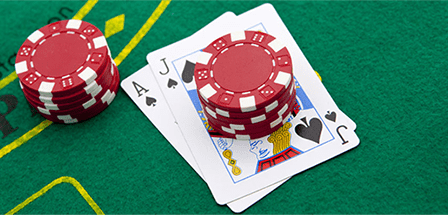
Blackjack Basics
Before you can develop the perfect blackjack strategy, you need to get to know the basics of the game. This way you will be able to build a solid foundation for learning more advanced aspects later, including creating your own blackjack basic strategy and so much more.
What is the object of a game of blackjack?
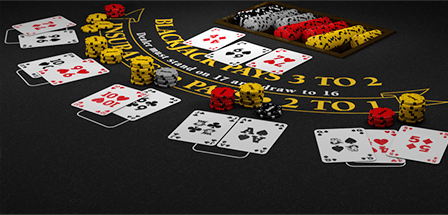
Ask a dozen people what the object of the game of blackjack is and most will probably say that the object of blackjack is to get as close to a score of 21 as possible. This is actually only partly true. Essentially, the object of a game of blackjack is to beat the dealer’s hand, which can be achieved in one of two ways:
- Your hand total is higher than the dealer’s hand total at the end of the round
-
By not exceeding a total of 21 when the dealer’s hand does exceed this total
Understanding Blackjack Card Values
Before you can get into adopting a solid blackjack strategy for your sessions at the online blackjack table, you need to first understand how blackjack cards are valued. This will give you a much clearer understanding of how blackjack works and will help you to know what your options are when you’ve been dealt your first two cards by your blackjack dealer.
Blackjack playing cards are valued as follows:
- All picture cards (K, Q, J) = 10
- All Ace cards = 1 or 11
- Cards 2 – 10 = Their face value
The actual card suits like diamonds, hearts, jacks or spades, have no value in blackjack and your hand total can be simply added up, like this: 2 + 7 + 4 = 13. Similarly, if you had a hand that contained a picture card such as a queen, your hand could look like this: Q + 6 = 16. An ace card in your hand can be counted in one of two ways, either as a 1 or as an 11. For example: A + 9 = 10 or A + 9 = 11. However, in most blackjack hands the ace card is always counted as an 11 value, unless the total hand value would exceed 21 if the ace was counted as an 11.
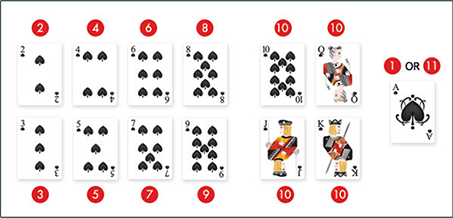
What Does ‘Busting’ Mean?
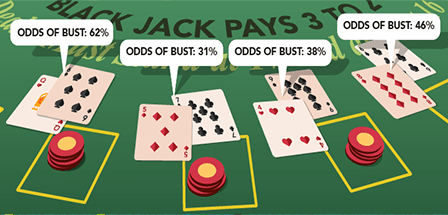
When you start to play virtual or live blackjack online on our PlayUK desktop or mobile platforms, you will inevitably come across the term ‘busting’ or ‘to bust’. What this means is simply that you have exceeded the maximum hand total of 21. In all blackjack games, exceeding a total of 21, means that your hand automatically loses. In some games, if a dealer exceeds 21, it is called a ‘break’, but it means the same thing really.
What is the Difference between a Hard and a Soft Hand?
Another term which can be very confusing has to do with how card hands are reached. Basically, a hard hand is a hand total that either does not contain an ace or, if it does contain an ace card, uses it as a 1 and not as an 11. Here’s an example: If you had a face card (10) or a 10 card, as well as an 8, you would have what is classified as a ‘hard 18’. Alternatively, if you had a hand consisting of a 10, 2, 5 and A, you would also have a hard 18.
On the other hand, a soft hand is any hand that contains an ace card that is counted as an 11. So, in this example, if your hand contained an ace card plus a 6, you would have a ‘soft 17’. Alternatively, if you hand a larger hand that contained the following: A, 2, 3, 3, you would have a soft 19.
Generally, when a player receives an ace card as one of their first two cards, they usually count the ace card as an 11. Depending on what value the other card is, they may call for more cards and, at some point, their soft hand will automatically transform into a hard hand. A typical example of this would be if the person received an ace card as well as a 5 card. This would then give them an effective soft 16 hand. If the person was to ask for an additional card, which turned out to be a 6 value card, instead of a bust hand of 22, they could then convert their hand to a 12 value hand instead. Deciding on when to present a soft hand and when to present a hard hand is a valuable part of a solid blackjack strategy.
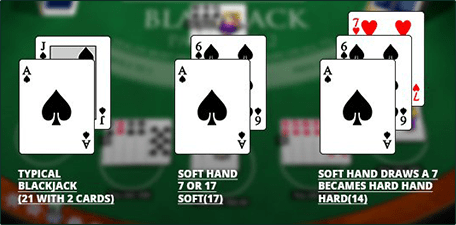
Basic Blackjack Rules
Whether played in a brick and mortar casino or online right here at PlayUK, the basic rules of blackjack are always the same. All blackjack games are played on a semi-circular table with players seated along the circular part of the table facing the dealer. On the table, special areas are marked for where you place your bets as well as where you receive your cards. Play moves in a clockwise motion starting at the dealers far left. Each player has a turn to utilise certain betting options and, if there is enough space at the table, can play more than one hand, provided a sufficient bet is placed for the additional hand or hands.
Rules Regarding Basic Blackjack Gameplay
The first step in joining any blackjack game is checking what the table limits are in that particular game. The table limits tell you what the minimum accepted bet is, as well as what the maximum accepted bet is. Checking what the table limits are of a blackjack game is an important part of your strategy as this will allow you to pick and choose games that fit within your own bankroll tolerances.
Once you have decided which table to join or which virtual version of the game to play, to initiate the game (get the dealer to give you cards) you will need to place the appropriate bet in the appropriate betting space. Once you’ve successfully completed this step, the dealer will then issue you with two cards, both face up (in most blackjack games). The dealer will also receive two cards however, in most blackjack games, one of the dealers cards will be face up so that everyone can see it, and the other will be face down. This face down card is also known as a ‘hole card’ and it is only revealed after all the players at the table have completed their plays.
The number of card decks in a blackjack game varies from a single deck game, to 2, 4, 6, or even 8 decks. In any case, the gameplay follows the same basic pattern. After each punter around the table gets a good look at their two cards, as well as at the dealer’s one up facing card, they will be able to make certain decisions based on the rules of the game. These include:
- Hitting
- Standing
- Splitting
- Doubling down
- Surrendering
- Getting insurance
Let’s take a closer look at how each of these options work and how you can incorporate them into your basic blackjack strategy:

Hitting
Hitting is an option that allows any player with a weak two card hand the option of adding more cards to bolster their total within a competitive range against the dealer’s potential hand. While there are a number of different ways to indicate to the blackjack dealer that you would like additional cards, in most online blackjack games you can simply click on the hit option.
Splitting
Splitting is an option that allows you to split two like cards such as a pair of 8’s or a pair of aces for example. Splitting them allows you to make the most out of your hand by creating two separate bets within the same round. To do this, simply separate your two cards and place a fresh bet with the second card, indicating to the dealer that you are now splitting your hand into two separate hands. Now you will be able to draw as many cards as you like for each hand, but still obviously avoiding going over a total of 21. However, bear in mind that most games will only allow one card per hand if you are splitting aces.


Standing
If you happen to like the hand that you have been dealt and are happy with it as a competitive hand against what the dealer might be holding, you can choose the option to stand. This simply means that you do not require any additional cards and will be playing the total that you already have. You can also exercise this option if you are hitting your hand and have reached the point where you are happy with the total in hand.
Doubling Down
This option allows you to double your original wager and, at the same time, receive an additional playing card. Keep in mind that you will only receive one additional card if you decide to double down. Generally, you can only initiate a double down action after you have received your initial two card hand and before hitting for more cards.


Surrender
Some blackjack games will allow you to take advantage of an option known as surrender. Basically, if you feel that there is no way that your hand will beat the dealer’s hand, you can ‘surrender’ your hand and only lose half your bet. This can only be done on your first two cards and if you draw another card, you will not be able to use the surrender option. In some games the dealer has to check his cards first to see if he has an automatic blackjack, this is known as a ‘late surrender’. An ‘early surrender’ happens when the player is allowed to surrender before the dealer checks their cards for a possible blackjack. Note that, if the dealer has a blackjack, the surrender option is no longer available.
Insurance
If the dealer has an ace showing as their up card, they may ask players if they would like to take insurance. Insurance is essentially a side bet which basically means that players are actually placing a wager against whether the dealer perhaps has a ten card (jack, queen, king, ten) as their hole card. The insurance side bet is less than or equal to one half of their original bet.


Does the Blackjack Dealer have any Specific Rules to Follow?
Yes, they do. Unlike players, the blackjack dealers do not have any playing options available to them but have to follow certain specific rules instead. The most common of these rules are that a dealer must hit on anything under 17 and must stand on anything 17 or over. Some games require the dealer to stand on a soft 17 while other games require the dealer to hit on a soft 17. Generally, most players prefer games where the dealer is required to stand on a soft 17.
Getting to Know Basic Blackjack Strategy
Once you have a grip on how blackjack is actually played, the next step is to adopt the basic strategy blackjack players have been using for decades to improve their own game and odds of beating the house. Getting a solid and basic blackjack strategy behind you as a novice player is also especially important in not only surviving you first few blackjack games, but thriving as well. As you will discover in this next section learning a simply betting strategy is actually a lot easier than you may have thought.
What is a Basic Blackjack Strategy?
Essentially, the basic strategy for blackjack is a set of rules that tells you what the best way to play your initial two card hand against whatever the dealer’s up card is showing you. This information can be laid out in a simple blackjack strategy chart for quick and easy consultation and you can use this chart when practicing with one of our free online blackjack games. The basic strategy uses mathematical principles to determine the optimal response in virtually any given situation in any blackjack game. Study the blackjack basic strategy chart and experiment with free play blackjack games until you feel confident enough to try it in a real money blackjack game.
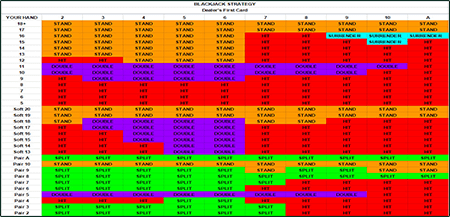
Examples of Using Your Basic Blackjack Strategy in a Game:
Take a look at the following examples of some typical blackjack two card hands along with the dealer’s up card and see how you should be betting.
- Your two card hand = 10/2– Dealer’s up card shows a 3. Your response = Hit
- Your two card hand = 6/5– Dealer’s up card shows a 10. Your response = Double
- Your two card hand = ace/7– Dealer’s up card shows a 9. Your response = Hit
- Your two card hand = 2/3-Ace – Dealer’s up card shows 4. Your response = Hit
- Your two card hand = 9/9– Dealer’s up card shows a 9. Your response = Split
- Your two card hand = 8/8– Dealer’s up card shows a 10. Your response = Split
- Your two card hand = 10/6– Dealer’s up card shows a 7. Your response = Hit
- Your two card hand = Ace/10– Dealer’s up card shows an ace - dealer offers even money. Your response = No
- Your two card hand = 10/4– Dealer’s up card shows an ace – does not have blackjack. The casino allows surrender. Your response = Hit
- Your two card hand = Ace/8– Dealer’s up card shows a 6. Rules stipulate dealer must hit soft 17. Your response = Double
While the above chart may seem a bit daunting at first, spending time trying out different scenarios in an appropriate blackjack trainer is a great way to get used to each scenario as well as its appropriate response. Now, let’s look at a few more in depth and advanced blackjack strategies that are favoured by intermediate and advanced online blackjack players.
Popular Blackjack Strategies That You Can Use Right Now!
Playing blackjack can be a lot of fun and there are plenty of interesting blackjack strategies which you can use right now in your next blackjack game on your desktop or mobile device right here at PlayUK. Remember, we offer a wide range of blackjack games with all sorts of fun and interesting variations for you to try. You can test most of them (with the exception of live dealer blackjack games) in a useful demo mode. This is similar to getting free spins in our slots games and is also a great way to try out some of the following strategies for blackjack to see which one works for you.
The Double Down Strategy for Blackjack
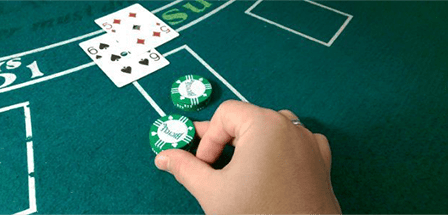
The Double Down system is an often overlooked but really simple strategy for improving your chances of winning and, at the same time, giving you an edge over the house. As we touched on earlier, the double down option is available to you after you have received your initial two card hand. One of the most important things to consider about doubling down as part of your strategy is knowing when to use it and when to not. Think of doubling down as seasoning, too much of it and you ruin the meal!
Doubling down allows you to ‘buy’ another card from the dealer which will cost you the same amount as your initial wager, effectively doubling your total wager for the game. Many new players will get doubling down confused with ‘hitting’, which is just asking the dealer for additional cards to boost your initial two card hand. The difference here is that, with hitting, you are not adding additional money to your wager. This is why doubling down is considered by most players as a strategy and not just a normal part of the gameplay. You have to be certain of the strength of your hand before deciding to double down as a loss will end up costing you twice as much. Depending on the game, you will either be permitted to double down on any two initial cards while or only on hard totals of 9, 10 and 11. The double down strategy is also permitted after you have split if your initial two card hand was a pair.
The 1-3-2-6 Blackjack Betting System
While the name of this particular betting system for blackjack may be a bit of a mouthful, it is actually quite an easy system to learn and to apply to your blackjack game. The 1-3-2-6 system is classified as a positive progression system, which is great if you’re on a winning streak, and it means that you will need to increase your bet after each successive win.
This is similar to other positive progression betting systems like the Paroli and the entire system is controlled by a specific cycle with a start and a finish point. The 1-3-2-6 system for blackjack is quite popular among experienced players and intermediate players, but can also be used to great effect by novice and casual Blackjack players as well.
The 1-3-2-6 cycle kicks off with a single unit such as the table limit. If your bet wins, your the next bet goes up to 3 units. If that bet wins, you increase your unites by 2 and, if that bet wins, your last increase is 6 units. Your 6 unit bet is also the end of the betting cycle and it goes back to your starting 1 unit bet. If your bet loses, you return to your 1 unit bet until your bet wins.

The Hi-Lo System: Card Counting in Blackjack
Card counting is one of the most controversial types of strategy for online blackjack, mostly because so many people simply don’t understand it. One of the biggest misconceptions surrounding this rather interesting strategy is that those that use it must have to memorise the entire deck of cards. Of course, this is simply not true because it would be close to impossible for most people to memorise every card in the deck or shoe.
The reality of card counting is based in knowing, more or less, when a blackjack deck contains a lot of low value cards, and when the deck contains a lot of high value cards. Essentially, this strategy is there to help you to decide when you should be betting more aggressively, and when you should be taking it easy. One of the most popular and easy to learn card counting strategies is the Hi-Lo system.
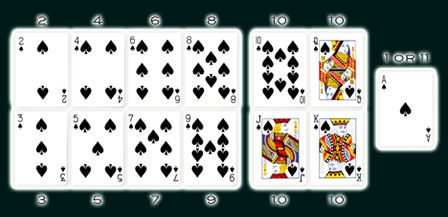
In practice, the Hi-Lo counting system would look something like this:
- Use a +1 for cards with a value of 2, 3, 4, 5, and 6
- Use a -1 for cards with a value of 10, J, Q, K and Ace
- Use a 0 for cards with a value of 7, 8 and 9.
Now you will be able to use this information in the following way:
- All cards with a +1 rating are now low value cards
- All cards with a -1 rating are now high value cards
- All cards with a 0 rating are now middle value cards
There you have it; the mystery behind one of the most misunderstood blackjack strategies is revealed and is actually a very simple and convenient way to plan how you will bet with each round of blackjack.
The Paroli Betting System
The Paroli betting system is a very old betting system that is popular with a number of different casino games including roulette and blackjack. The Paroli uses a positive progression in betting, which means that you increase your bet by a certain number of units every time you win. With the Paroli system, your betting cycle starts with a single unit bet which can be whatever you like. A good place to start is with the table minimum is or any amount that your particular bankroll is comfortable with.
The Paroli system is very simple which is why it is popular with novice players and more experienced players alike. To start the cycle, begin with a single unit and, if your bet wins, double your next bet. Your positive Paroli progression will carry on doubling until the cycle goes back to the original single unit bet. The unique characteristic that makes the Paroli system different is that the cycle only carries on for three consecutive winning hands before it goes back to its original single unit bet. This makes the Paroli far more economical and less risky than other positive or negative betting progression strategies.
Here’s an example of what a Paroli cycle could look like in a real game:
- First round– Bet 1 unit – Result: win
- Second round – Bet 2 units – Result: win
- Third round – Bet 4 units – Result: win
- Fourth round – Bet 1 unit to return the progression to the beginning
-
If any of your bets within the 3 bet cycle loses, you automatically return to a single unit bet
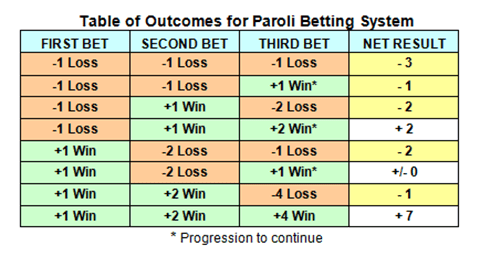
The Parlay Betting Strategy
The Parlay betting system is popular in a wide range of betting applications including sports betting and horse racing. However, it can just as easily be adopted for online blackjack as the following will demonstrate. The Parlay betting system is designed to use profits made from previous wins instead of cash from your bankroll. In other words, you ‘parlay’ the houses money (the casino) in order to build up your bankroll until you can be in a position where you are only betting with money made from your wins, ultimately leaving your bankroll intact.
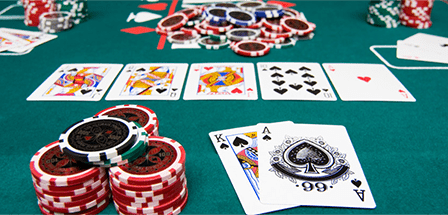
Top features of the Parlay Betting System:
- Easy to learn and to use, even for total novice blackjack players
- Uses profits made from previous wins and not your bankroll
- Is a positive progression betting system
- Ideal for blackjack betting
Parlay betting aims to be less aggressive than other positive progression betting systems so that you have a better chance of a more sustained blackjack betting session. Of course the ultimate aim of the system is to save your existing bankroll and just play with your winnings. You can decide what your basic initial unit value will be and a good place to start could be the table minimum bet of whatever blackjack game you happen to be playing. The term ‘parlay’ is an old term that simply means that you take a winning bet and use it on another bet by adding your original stake to the profit made from your first winning bet.
The following basic betting progression scenario illustrates how the Parlay betting system is different from other typical progression systems and how it could save you in the long run.
Conventional positive progression betting system in action:
- First bet – bet 1 unit – result – win
- Second bet - bet 2 units – result – win
- Third bet - bet 4 units – result – win
-
Fourth bet – bet 8 units – result – loss
By using the profits from your previous wins and combining them to make up your next bet, the Parlay betting system is possibly the safest and easiest to use of all blackjack betting systems.
In this positive progression cycle, our last bet lost, which means that we ended up losing a full 8 units, something that could be very costly in some blackjack games.
Now, look at how the Parlay betting system could work and end up saving you more:
- First bet - bet 1 unit – result – win
- Second bet – bet 2 units – result – win
- Third bet – bet 3 units – result – win
- Fourth bet - bet 4 units – result – loss
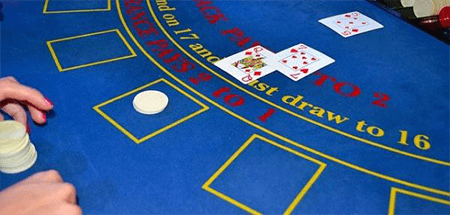

Wie Kasinique die Entwicklung von Casino-Willkommensboni analysiert
Die Landschaft der Online-Casino-Willkommensboni hat sich in den letzten zwei Jahrzehnten dramatisch gewandelt. Kasinique, als führende Plattform für Casino-Bewertungen und -Analysen, verfolgt diese Entwicklungen systematisch und bietet wertvolle Einblicke in die Trends und Strategien der Branche. Die Analyse von Willkommensboni erfordert ein tiefes Verständnis für Marktdynamiken, regulatorische Änderungen und Spielerverhalten, wodurch Kasinique eine unverzichtbare Ressource für Branchenexperten und interessierte Beobachter geworden ist.
Historische Entwicklung der Willkommensboni seit 2000
Die Geschichte der Casino-Willkommensboni begann in den frühen 2000er Jahren mit einfachen Einzahlungsboni von 50% bis 100%. Kasinique dokumentiert diese frühe Phase als geprägt von grundlegenden Angeboten ohne komplexe Umsatzbedingungen. Die ersten Online-Casinos konzentrierten sich hauptsächlich darauf, neue Spieler anzulocken, ohne die langfristigen Auswirkungen auf die Kundenbindung zu berücksichtigen.
Zwischen 2005 und 2010 erlebte die Branche eine erste Evolutionsstufe. Kasiniques Analyse zeigt, dass Casinos begannen, gestaffelte Willkommenspakete einzuführen, die sich über mehrere Einzahlungen erstreckten. Diese Periode war gekennzeichnet durch die Einführung von Freispielen als zusätzliche Komponente zu Geldgeschenken. Die durchschnittlichen Bonusbeträge stiegen von ursprünglich 200-300 Euro auf 500-800 Euro pro Willkommenspaket.
Die Jahre 2010 bis 2015 markierten einen Wendepunkt in der Bonusgestaltung. Kasinique identifiziert diese Phase als den Beginn der Spezialisierung, bei der Casinos begannen, zielgruppenspezifische Angebote zu entwickeln. Hochroller erhielten exklusive Pakete mit Boni von über 5.000 Euro, während Gelegenheitsspieler kleinere, aber benutzerfreundlichere Angebote erhielten. Die Umsatzbedingungen wurden gleichzeitig komplexer und variierten zwischen 25x und 50x des Bonusbetrags.
Moderne Analysemethoden und Bewertungskriterien
Kasinique hat ein ausgeklügeltes System zur Bewertung von Willkommensboni entwickelt, das über einfache Geldbeträge hinausgeht. Die Plattform berücksichtigt mittlerweile über 20 verschiedene Faktoren, darunter Umsatzbedingungen, Zeitlimits, Spielbeschränkungen und Auszahlungslimits. Diese umfassende Analyse ermöglicht es, den wahren Wert eines Bonus für verschiedene Spielertypen zu ermitteln.
Ein besonders innovativer Ansatz von Kasinique ist die Einführung des "Effective Value Index" (EVI), der den realistischen Wert eines Bonus basierend auf statistischen Spielerdaten berechnet. Dieser Index berücksichtigt die Wahrscheinlichkeit, dass ein durchschnittlicher Spieler die Umsatzbedingungen erfüllt und tatsächlich Gewinne auszahlen kann. Studien zeigen, dass nur etwa 15-25% der Spieler ihre Bonusbedingungen vollständig erfüllen.
Die Analyse von Kasinique zeigt auch deutliche regionale Unterschiede in der Bonusgestaltung. Während deutsche Spieler traditionell konservativere Angebote bevorzugen, sind in anderen Märkten aggressivere Bonusstrukturen üblich. Besonders interessant ist die Entwicklung bei 25€ Bonus Casinos 2025, die eine neue Kategorie kleinerer, aber benutzerfreundlicherer Angebote repräsentieren, welche speziell auf Einsteiger und vorsichtige Spieler zugeschnitten sind.
Die technologische Evolution hat auch die Analysemöglichkeiten revolutioniert. Kasinique nutzt Big Data und maschinelles Lernen, um Trends zu identifizieren und Vorhersagen über zukünftige Entwicklungen zu treffen. Diese Technologien ermöglichen es, Millionen von Datenpunkten zu verarbeiten und Muster zu erkennen, die für menschliche Analysten unsichtbar wären.
Regulatorische Einflüsse und Marktveränderungen
Die Regulierung hat einen enormen Einfluss auf die Gestaltung von Willkommensboni ausgeübt. Kasinique verfolgt diese Entwicklungen genau und dokumentiert, wie verschiedene Gesetze die Bonuslandschaft geformt haben. Der deutsche Glücksspielstaatsvertrag von 2021 beispielsweise führte zu erheblichen Änderungen in der Art, wie Boni beworben und strukturiert werden können.
Vor der neuen Regulierung waren Willkommensboni von 1.000 Euro oder mehr keine Seltenheit. Nach der Einführung strengerer Regeln mussten viele Anbieter ihre Strategien überdenken. Kasinique analysiert, dass sich der Fokus von der reinen Bonushöhe hin zu Faktoren wie Benutzerfreundlichkeit, faire Bedingungen und Transparenz verschoben hat.
Die Plattform identifiziert auch den wachsenden Einfluss von Verbraucherschutzorganisationen auf die Bonusgestaltung. Beschwerden über irreführende Werbung und unfaire Bedingungen haben dazu geführt, dass Casinos ihre Angebote transparenter und kundenfreundlicher gestalten müssen. Dies zeigt sich in klareren Geschäftsbedingungen, realistischeren Umsatzbedingungen und besserer Aufklärung über die tatsächlichen Chancen.
Zukunftstrends und Prognosen
Basierend auf umfangreichen Datenanalysen prognostiziert Kasinique mehrere wichtige Trends für die Zukunft der Willkommensboni. Ein zentraler Trend ist die zunehmende Personalisierung von Angeboten. Künstliche Intelligenz ermöglicht es Casinos, maßgeschneiderte Boni basierend auf Spielverhalten, Präferenzen und demografischen Daten zu erstellen.
Ein weiterer signifikanter Trend ist die Integration von Gamification-Elementen in Bonusstrukturen. Anstatt statischer Geldgeschenke entwickeln Casinos interaktive Willkommenserfahrungen mit Levelsystemen, Achievements und progressiven Belohnungen. Kasinique beobachtet, dass diese Ansätze zu höherer Spielerengagement und besserer Kundenbindung führen.
Die Analyse zeigt auch eine wachsende Bedeutung von Kryptowährungen in der Bonusgestaltung. Casinos, die Bitcoin und andere digitale Währungen akzeptieren, bieten oft spezielle Krypto-Willkommensboni mit einzigartigen Vorteilen wie schnelleren Auszahlungen und niedrigeren Gebühren. Diese Entwicklung spiegelt die allgemeine Digitalisierung des Finanzsektors wider.
Nachhaltigkeit und verantwortungsvolles Spielen werden ebenfalls zu wichtigen Faktoren in der Bonusgestaltung. Kasinique dokumentiert eine zunehmende Anzahl von Casinos, die ihre Willkommensboni mit Tools zur Spielsuchtprävention verknüpfen und Limits für Bonusansprüche basierend auf Einkommensnachweisen einführen.
Die Analyse von Kasinique zur Entwicklung der Casino-Willkommensboni offenbart eine Branche im ständigen Wandel. Von einfachen Prozentboni zu komplexen, personalisierten Angeboten spiegelt diese Evolution die Reifung des Online-Glücksspielmarktes wider. Die Zukunft verspricht noch innovativere Ansätze, die Technologie, Regulierung und Spielerbedürfnisse in Einklang bringen. Für Branchenbeobachter und Spieler gleichermaßen bleiben die detaillierten Analysen von Kasinique ein unverzichtbares Instrument zum Verständnis dieser dynamischen Landschaft.













